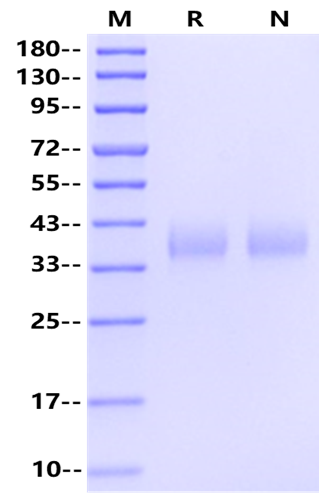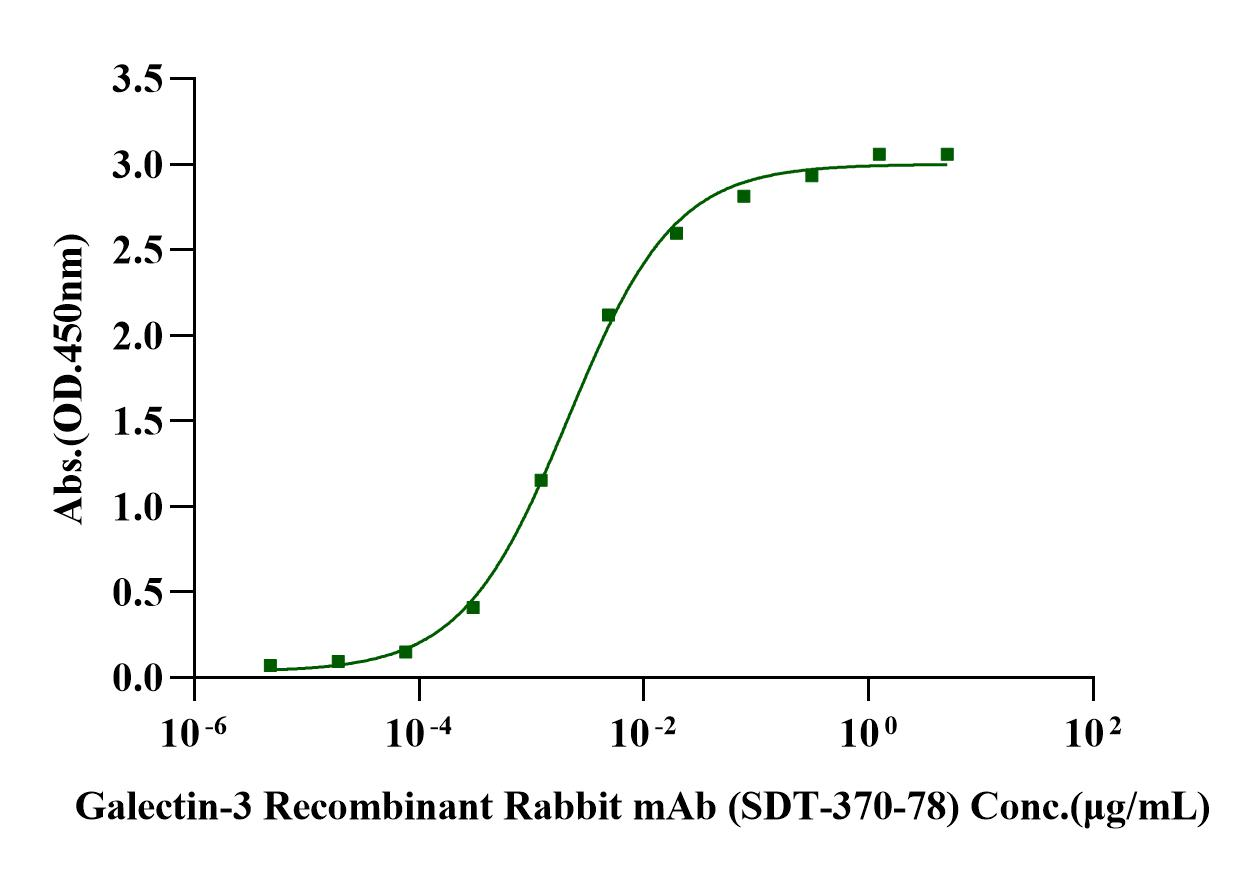Ala2-Ile250, with C-terminal 6*His
ADNFSLHDALSGSGNPNPQGWPGAWGNQPAGAGGYPGASYPGAYPGQAPPGAYPGQAPPGAYPGAPGAYPGAPAPGVYPGPPSGPGAYPSSGQPSATGAYPATGPYGAPAGPLIVPYNLPLPGGVVPRMLITILGTVKPNANRIALDFQRGNDVAFHFNPRFNENNRRVIVCNTKLDNNWGREERQSVFPFESGKPFKIQVLVEPDHFKVAVNDAHLLQYNHRVKKLNEISKLGISGDIDLTSASYTMIHHHHHH
35-41kDa (Reducing)
>95% by SDS-PAGE&RP-HPLC
Reconstitute at 0.1-1 mg/ml according to the size in ultrapure water after rapid centrifugation.
Galectin-3 (Gal-3) is a member of the galectin family of carbohydrate binding proteins which have affinity for beta-galactoside. Gal-3 is characterized by an N-terminal proline-rich tandem repeat domain and a single C-terminal carbohydrate recognition domain. Gal-3 can self-associate through the N-terminal domain allowing it to bind to multivalent saccharide ligands. Gal-3 is expressed in the nucleus, cytoplasm, mitochondrion, cell surface and extracellular space. Gal-3 plays a role in numerous cellular functions including apoptosis, innate immunity, cell adhesion and T-cell regulation and exhibits antimicrobial activity against bacteria and fungi. Alternate splicing results in multiple transcript variants. Gal-3 plays an important role in the pathogenesis of neuroinflammatory and neurodegenerative disorders, such as multiple sclerosis, Alzheimer's disease, Parkinson's disease, and Huntington's disease. On the other hand, there is also evidence of the protective role of Gal-3 due to its anti-apoptotic effect in target cells.


Immobilized Galectin-3 His Tag, Human (Cat. No. UA010129) at 2.0μg/mL (100μL/well) can bind Galectin-3 Recombinant Rabbit mAb (SDT-370-78) (Cat. No. S0B3134) with EC50 of 1.74-2.61ng/mL.